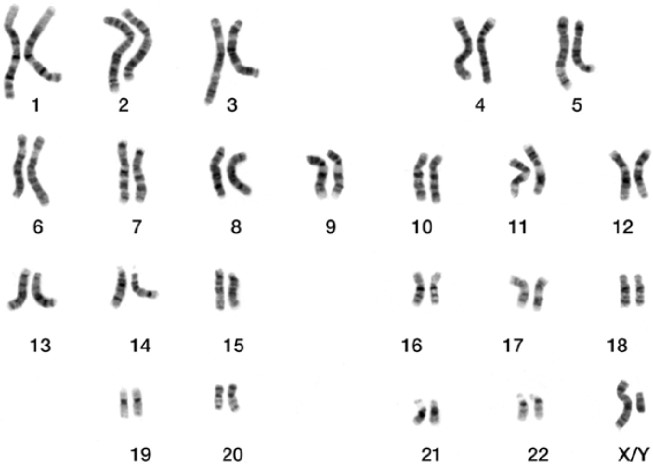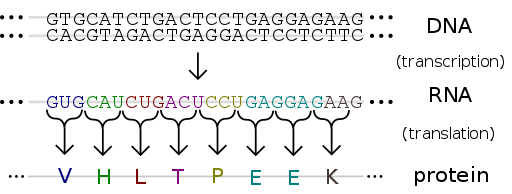Osteogenesis imperfecta
2.1. DNA, genes and chromosomes
DNA (deoxyribonucleic acid) is an organic compound that determines the unique and individual characteristics of every living organism. DNA information is organised in chromosomes within the cells. Every cell in the body has 46 chromosomes, made up of 23 pairs, with the exception of the sex cells —the egg (ovum) and the sperm (spermatozoid)—, which are special. These have followed a special process of cell division. Thus, they only have one copy of each chromosome (23 chromosomes), unlike the two copies of each chromosome present in the rest of the cells (46 chromosomes). So when the egg and the sperm unite, they form an organism with two copies of each chromosome (23 from the egg + 23 from the sperm = 46 chromosomes). Every baby inherits one chromosome from each parent.

Each fragment of DNA that encodes a protein or a particular characteristic is called a gene. There are thousands of genes in each chromosome. The genes are made up of a sequence of nucleotides that contain nitrogenous bases that determine the unique gene sequence. There are four kinds of nitrogenous bases: adenine, guanine, cytosine, and thymine, or A, G, C, and T. The bases bond with each other in a well determined way, giving DNA its distinctive double helix structure (Figure 4).

DNA is found in the nucleus of all nucleated cells, or eukaryotes. In humans, the DNA molecule has 3 billion base pairs; this of information is exactly the same in each of the 30 billion active cells in the body at any given moment. This enormous quantity of information is the set of instructions that tell the body what we look like, what are our enzymes and proteins, which is our hair colour and if we are propense to gain or lose weight. All of this is determined by the information contained in the DNA. All these instructions are called the genome. If we were to print the three billion base pairs of information onto a A4 sheet of paper, we would end up with a book two metres thick!
For a correct functioning of the organism, every person should have the same sequence of enzymes and proteins. Otherwise, there could be serious consequences; there is, however, a margin of variability. There are features that distinguish us physically from each other (phenotypic variations), determining the eyes and skin colour, texture of the hair, height and weight. Other features distinguish us genetically from each other (genotypic variations). These include for example blood groups (A-B-O), the RH factor, and the genes that produce antibodies and which may be relevant in the process of organ donation.
If the cell needs to form a protein from a DNA sequence, it uses a set of instructions known as the genetic code. The code defines the relation between sequences of 3 DNA bases (a codon) and each of the 20 amino acids we humans have; these are arranged in a chain to form a protein. In a similar way to that explained for DNA bases, amino acids are the building blocks of proteins and their sequence makes them unique. Protein synthesis begins with DNA. A copy of this molecule is made in the form of an intermediate molecule called RNA (ribonucleic acid). This process is known as transcription. The RNA corresponding to each gene leaves the cell nucleus and it is transformed into a protein, in a process known as translation (Figure 5).

A mutation is a stable change in a gene, which in turn causes an alteration in the synthesis of the protein that it encodes, thereby modifying the protein function. Mutations that affect sex or reproductive cells may be inherited (Figure 6).
